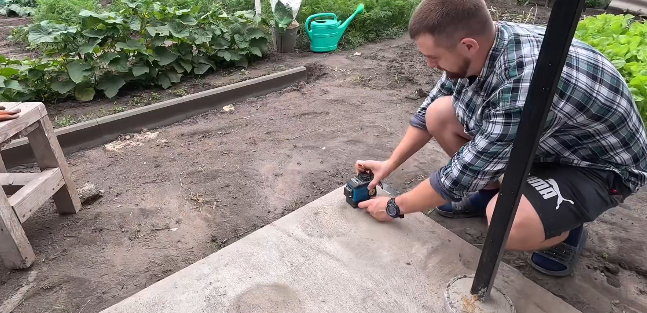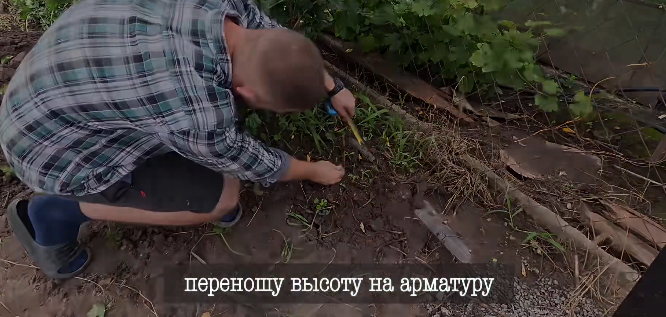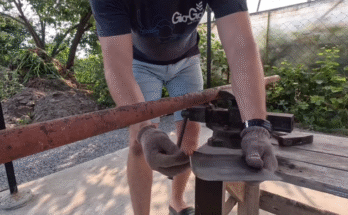
Installing sidewalk curbs may seem like a simple construction task, but the success of the project heavily relies on choosing and preparing the correct type of concrete. One of the best options for this job is semi-dry concrete—a mix that’s uniquely suited for forming curbs with strong structural integrity, clean edges, and long-term durability.
In this article, we’ll explain what semi-dry concrete is, why it’s ideal for sidewalk curbs, how to make it properly, and key tips for achieving the best results.
What Is Semi-Dry Concrete?
Semi-dry concrete, also known as low-slump or zero-slump concrete, contains just enough water to activate the cement but not enough to make the mix flow. It has a crumbly, damp consistency similar to wet sand or compacted soil. This type of concrete doesn’t pour like traditional mixes—instead, it’s placed and compacted into molds or forms.
The primary benefit of semi-dry concrete is its ability to hold shape immediately, which makes it perfect for forming vertical structures like curbs and edges without waiting for the mix to stiffen. It also reduces the risk of deformation and provides a clean, smooth surface with sharp lines.

Why Use Semi-Dry Concrete for Curbs?
Sidewalk curbs need to be both functional and aesthetically pleasing. Here’s why semi-dry concrete is the right choice:
1. Excellent Workability for Shaping
The stiff consistency of semi-dry concrete means it can be hand-formed or mechanically molded with precision. You can use curb machines or simply shape it manually with a trowel, and it will maintain the design without slumping or sagging.
2. Faster Finishing and Curing
Because semi-dry concrete contains less water, it cures faster. That means your curbs can be finished and exposed to light foot traffic or further construction in less time than with wetter concrete mixes.
3. Higher Strength and Lower Shrinkage
Excess water in concrete can weaken the final product and lead to cracks over time. The semi-dry mix minimizes this risk, resulting in stronger, more durable curbs with lower shrinkage potential.
4. Clean, Professional Appearance
Semi-dry concrete enables sharp edges and defined lines, giving sidewalk curbs a clean, finished look. This is especially important in urban or landscaped environments where aesthetics matter.
Ingredients for Semi-Dry Concrete
To prepare semi-dry concrete for curb installation, you’ll need the right ratio of core materials:
- Cement (Ordinary Portland Cement or a blended type)
- Fine Aggregate (Sand)
- Coarse Aggregate (Small gravel or crushed stone)
- Water
A general mix ratio for semi-dry concrete suitable for curbs is:
1 part cement : 2 parts sand : 3 parts coarse aggregate
This ratio may vary slightly depending on local materials and climate, but it’s a reliable starting point.

How to Mix Semi-Dry Concrete
Whether you’re mixing by hand or using a concrete mixer, the goal is to achieve a crumbly, cohesive texture that holds its shape when compacted.
Step-by-Step Mixing Instructions:
1. Measure Materials Accurately
Start by measuring your ingredients using buckets or shovels. Consistency is key for uniform strength and appearance.
2. Dry Mix Aggregates and Cement
Combine the sand, gravel, and cement thoroughly before adding water. This ensures even distribution of cement throughout the mix.
3. Add Water Gradually
Add water slowly, mixing as you go. The right consistency is achieved when the mix holds together in your hand when squeezed but does not release water. If water drips out or the mix becomes slushy, you’ve added too much.
4. Check the Mix
Do a “ball test” by grabbing a handful of mix and forming it into a ball. It should stay compact and not crumble apart or ooze water.
Placing and Compacting Semi-Dry Concrete
Once your mix is ready, it’s time to place and shape the concrete into your curb formwork.
1. Prepare the Formwork
Install solid forms that match the size and shape of the desired curb. Use wood, metal, or plastic forms secured with stakes.
2. Place Concrete in Layers
Shovel the mix into the form in layers of about 4–6 inches. Compact each layer with a tamping tool or hand rammer. This is critical to eliminate air pockets and ensure structural strength.
3. Use a Curb Tool or Trowel
Shape the top and sides of the curb with a metal curb shaping tool or standard trowel. You can create rounded or straight edges depending on your design.
4. Finish Surface
Once shaped, smooth the surface with a trowel. If needed, apply a light mist of water to help with finishing, but avoid adding too much.

Curing Semi-Dry Concrete
Though it contains less water, semi-dry concrete still requires proper curing to gain full strength.
Curing Tips:
- Cover the curb with plastic sheeting or damp burlap for 24–48 hours to retain moisture.
- In hot or windy conditions, mist the surface occasionally to prevent rapid drying.
- Avoid placing semi-dry concrete in freezing temperatures unless you’re using antifreeze additives or heating measures.
Curing is crucial. Even semi-dry concrete can crack or weaken if it dries too fast or isn’t protected from temperature extremes.
Common Mistakes to Avoid
Here are a few pitfalls to watch out for:
- Using too much water: This turns semi-dry mix into regular concrete, eliminating the benefits.
- Inadequate compaction: This can lead to voids and weak spots in the curb.
- Not curing properly: Fast drying leads to surface cracks and reduced strength.
- Skipping the formwork or guides: Free-forming curbs without molds leads to uneven, unprofessional results.

Equipment You Might Need
To make and place semi-dry concrete efficiently, especially on larger jobs, consider having:
- A concrete mixer
- Buckets or wheelbarrows
- Shovels and trowels
- Hand tampers or mechanical compactors
- Curb shaping tools
- Plastic sheets or burlap for curing
Final Thoughts
Making the right concrete mix for sidewalk curbs is essential for durability, strength, and visual appeal. Semi-dry concrete stands out as the ideal choice due to its stiffness, ease of shaping, and resistance to shrinkage and cracking. By following proper mix ratios, carefully adding water, and compacting thoroughly, you can produce professional-grade curbs that last for years.
Whether you’re a contractor or a DIYer, understanding how to prepare and use semi-dry concrete gives you the confidence to tackle curb installations with lasting success. With the right preparation and attention to detail, your sidewalk project will look clean, precise, and stand the test of time.


